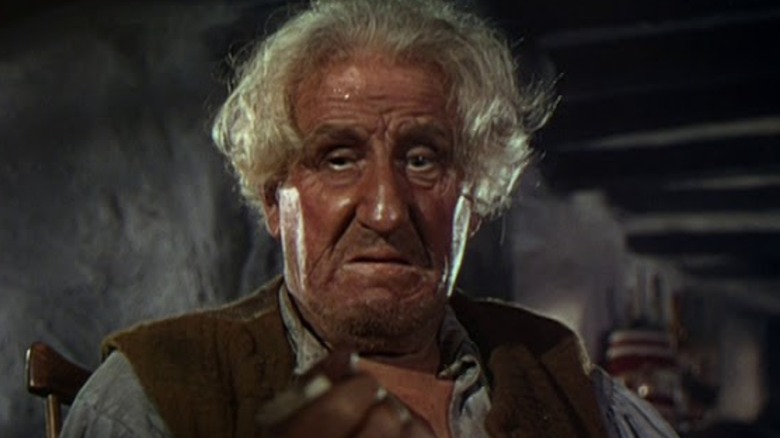The Literary Character That Influenced Robert Englund's Stranger Things Season 4 Performance
Learning Vecna's backstory in Part 1 of "Stranger Things 4" is a chilling experience. Deciding to have the creature's human father played by Freddy Krueger himself? That's just inspired.
No doubt, eighties horror fans went wide-eyed with excitement when they saw the visage of Robert Englund as Victor Creel greeting Nancy (Natalia Dyer) and Robin (Maya Hawke) at Pennhurst Mental Hospital. The man who terrorized countless teens on Elm Street through the years (often taking advantage of their own terrible decisions) is about as close as you can get to horror royalty. What's more, there is some key similarities between the backstory of Englund's iconic character, conveyed in the sixth "A Nightmare on Elm Street" film, and that of Creel's son Henry (Raphael Luce) on his way to becoming the terrifying Vecna: violent childhoods, demons visiting them in their dreams, and eventual possessions leading to devastating powers. The Duffer Brothers have been open about the inspiration Freddy provided for Vecna, and they make the most out of Englund's presence. Even the scratches on Victor's desk allude to Freddy's claw-glove (via Entertainment Weekly).
It would be easy to assume that Englund didn't have to think far for inspiration then. When playing Victor Creel, all he would really have to do is tap into the backstory of the murderous, spectral dream-dweller he played for eight movies. But Englund, an actor who was classically trained at the American branch of Britain's Royal Academy of Dramatic Arts (via Collider), looked somewhere very unexpected when grounding his "Stranger Things" character.
Englund's performance was inspired by Treasure Island's Billy Bones
"As actors, we access strange imagery. We use imagery sometimes that has nothing to do with what we're doing," said Englund in a recent interview with The Hollywood Reporter. "And one of the things I was using was a character from 'Treasure Island' named Billy Bones, who tells a huge story to Jim Hawkins about Long John Silver. It had nothing to do with Freddy Krueger or 'Nightmare.'"
Those familiar with Robert Louis Stevenson's classic novel will know how this makes sense. Though Billy Bones is a relatively minor character, appearing only in the first three chapters, he helps set the tone for protagonist Jim's harrowing adventure on the high seas.
Billy is an old drunk holing up at the Admiral Benbow Inn, about as close as a pirate can get to retirement (Blackbeard's initial plan in "Our Flag Means Death" notwithstanding). Such an alcoholic that he cannot bring himself to quit drinking even after a near-fatal stroke, he is a mean old man broken by his years as a pirate, and terrified of Long John Silver. The stories he tells Jim are intended not to excite, but to warn.
In other words, Henry-slash-Vecna is Victor's Long John Silver. And just as Billy's past inevitably dooms and catches up with him, so too is Victor unable to escape the terror of Vecna. Englund's classic literature references don't end there, though. He also suggested to The Hollywood Reporter that Victor's decision to blind himself is comparable to that of Oedipus in Sophocles' ancient Greek play, the result of a toxic brew of guilt, trauma, and unspeakable pain.
Just goes to show — if you really want to horrify, you can never go wrong with the classics.

